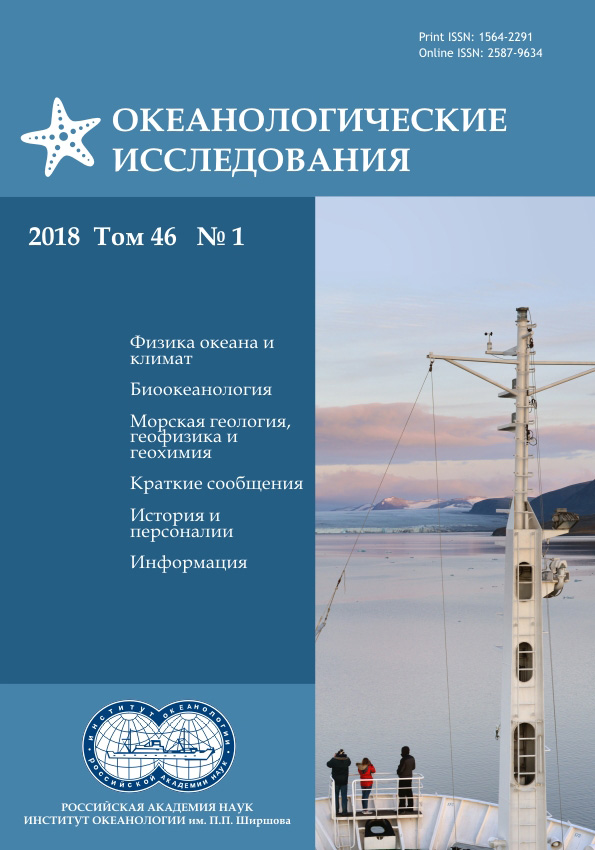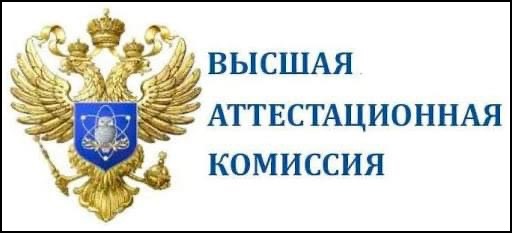НЕОТЕКТОНИЧЕСКИЙ ПРОГНОЗ РАЗВИТИЯ ВИСЛИНСКОЙ КОСЫ БАЛТИЙСКОГО МОРЯ
Аннотация
Любое прогнозирование опирается на принятые исходные позиции. В настоящее время применительно к береговым аккумулятивным формам сценарий их развития обычно базируется на представлениях о повышении уровня моря и запасов соответствующего рыхлого обломочного материала. Однако в региональных геосистемах существенным, а нередко и определяющм фактором, являются неотектонические условия. Изучение неотектоники любой территории более продуктивно, если рассматривать ее местоположение с учетом исторической эволюции и общей геолого-географической обстановки соответствующего региона. Это в полной мере относится к району расположения Вислинской косы. В геотектоническом отношении он приурочен к юго-восточному крылу Гданьской впадины, осложняющей крупную гемисинеклизу, в ложе которой формировалась акватория Балтийского моря по мере отступания последней стадии валдайского оледенения и последующего соединения с Мировым океаном. В ходе трансгрессии формировалась цепочка вдольбереговых баров, которые, соединившись, дали начало Вислинской пересыпи.
В результате выполненных исследований составлена картографическая модель неотектоники исследуемого района, где показана блоковая структура, в пределах которой произошло формирование Вислинской косы. Предлагаемый прогноз ее развития основан на анализе структурно-тектонической обстановки и голоценовой кинематики уровня моря. Показано, что эвстатический фактор не окажет заметного влияния на эволюцию косы, по крайней мере, на инженерном (50 ‒ 60 лет) масштабе времени. Каких-либо катастрофических изменений в развитии по природному сценарию приморской части данной аккумулятивной формы почти на всем ее протяжении за это время не предвидится, поскольку прибрежный морфогенез адаптировался к современной ситуации. Исключение составляет приканальная дистальная часть косы, где размыв берега может быть остановлен реализацией инженерных решений. В дальней перспективе можно ожидать распад Калининградского залива на ряд озер вследствие заполнения осадками и слабого тектонического поднятия территории. Оценивая природную обстановку района, можно сказать, что развитие Вислинской косы дает повод для беспокойства, но не для паники.
Литература
- Афанасьев Б.Л. Данилов И.Д., Недешева Г.Н., Смирнова М.С. История геологического развития Прибалтики в плиоцен-четвертичное время. – Рига: Зинатне, 1979. – 69 с.
- Бадюкова Е.Н., Жиндарев Л.А., Лукьянова С.А., Соловьева Г.Д. Геолого-геоморфологическое строение Куршской косы и некоторые этапы истории ее развития // Геоморфология, 2006. – № 3. – С. 37–48.
- Бадюкова Е.Н., Жиндарев Л.А., Лукьянова С.А., Соловьева Г.Д. Крупные аккумулятивные формы на берегах юго-восточной Балтики // Океанология. – 2017. – Т. 5 . – № 4. – С. 641–649.
- Бобыкина В.П., Кобелянская Я.С. Рельеф береговой зоны Вислинской косы // Балтийское море: Материалы XXIV Международной береговой конференции, посвященной 60-летию со дня основания Рабочей группы «Морские берега». Морские берега – эволюция, экология, экономика. – Туапсе, 1–6 октября 2012 г. – С. 67–70.
- Болдырев В.Л., Рябкова О.И. Динамика береговых процессов на Калининградском побережье Балтийского моря // Изв. ВГО. 2001. – Т.133. – Вып. 5. – С. 41–49.
- Геологическая история и геохимия Балтийского моря / ред. Лисицин А. П. – М.: Наука, 1984. – 176 c.
- Геология и геоморфология Балтийского моря. Сб. ст. (Редактор Григялис А. А.). Л.: Наука. 1991. 420 с.
- Грачев А.Ф., Долуханов П.М. Послеледниковое поднятие земной коры в Канаде и в Фенноскандии по данным радиоуглеродных датировок // Baltica. – 1970. – V. 4. – С. 297–312.
- Ермак А.В. Как развивается внутренний туризм в России: опыт Калининградской области / Министерство по туризму Калининградской области 30 ноября 2017 г. http://profi.travel/articles/31885/details, (дата обращения: 18.01.2007).
- Есюкова Е.Е. Результаты еженедельного мониторинга побережья вислинского залива в районе пос. прибрежный в 2011–2012 годах // Вестник Балтийского федерального университета им. И. Канта. – 2013. – Вып. 1. – С. 82–91.
- Зенкович В.П. Основные направления исследований прибрежной зоны морей в СССР // Теоретические вопросы динамики морских берегов. – М.: Наука, 1964. – С. 3–13.
- Калашникова И.В., Магницкий В.А. Об унаследованном характере современных движений земной коры// Известия АН СССР. Физика Земли. – 1978. – №10. – С. 13–20.
- Лукьянова С.А., Холодилин Н.А. Протяженность береговой линии мирового океана и различных типов берегов и побережий //Вест. МГУ. Сер. географ. – 1975. – № 1. – С. 48–54.
- Мещеряков Ю.А. Рельеф и современная геодинамика. – М.: Наука. 1981. – 276 с.
- Навроцкая С.Е., Чубаренко Б.В. Климатические тренды изменения уровня моря у побережья Калининградской области // Изв. КГТУ. – 2014. – № 32. – С. 133–142.
- Нигматулин Р.И., Вакуленко Н.В., Сонечкин Д.М. Глобальное потепление в реальности и в климатических моделях // Турбулентность, динамика атмосферы и климата: Сб. тр. Межд.. Конф., посвященной памяти академика А.М. Обухова (13–16 мая 2013 г.). – М.: ИФА РАН, 2013. – С. 76–79.
- Никифоров Л.Г. Структурная геоморфология морских побережий. – М.: МГУ,1977. – 175 с.
- Николаев Н.И. О принципах составления карт новейшей тектоники при неотектоническом районировании // Изв. ВУЗов. Геология и разведка. – 1982, – № 4 . – С. 3–12.
- Применение геоморфологических методов в структурно-геоморфологических Исследованиях / Ред. И.П. Герасимов. – М.: Наука, 1970. – 296 с.
- Свиридов Н.И., Емельянов Е.М. Фациально-литолоические комплексы четвертичных отложений центральной и юго-восточной Балтики // Литология и полезные ископаемые, 2000. – № 3. – С. 246–267.
- Харин Г.С. Структурно – формационное районирование // Система Балтийского моря под ред. Лисицына А. П. М.: Научный мир. 2017. С. 359‒373.
- Харин Г.С. Происхождение и эволюция Балтийской синеклизы // Тезисы докладов 7-й региональной конференции «Комплексное изучение бассейна Атлантического океана». – Калининград: КГУ, 1993. – С. 41.
- Шуйский Ю.Д. Проблемы исследования баланса наносов в береговой зоне морей. – Л.: Гидрометеоиздат, 1986. – 240 с.
- Kobelyanskay J., Piekarek-Jankowska, Boldyrev V.L., Bobykina V.P., Stepnievski P. The morphodynamics of the Vistyla Spit seaward coast (Southern Baltic, Poland, Russia) // Oceanological and Hidrobiological Studies. – 2009. – V. XXXVIII Suppl. – P. 41–56.
- Kowalewska-Kalkowska H.,Marks R. Zmiany poziomu morza w swinoujsciu jako istotny dowod Postepujacych zmian klimatycznych na ziemi. Zagrozenia i systemy ostregania. – Szczecin: Uniwersytet, Inst. Nauk o Morzu, – 2011. – P. 171–181.
- Mojski E. Development of the Vistula river delta and evolution of the Вaltic Sea, an attempt at chronological correlation ( The Baltic sea. Ed. B. Winterhalter) // Geological Survey of Finland Special Paper. – 1988. – V. 6. – P. 39–51.
- Zachowicz, J., Uścinowicz, S. Late Pleistocene and Holocene sediments of the Vistula Lagoon area// Geologia i Geomorfologia. – 1997. – № 3. – P. 29–37.80
Передача авторских прав происходит на основании лицензионного договора между Автором и Федеральным государственным бюджетным учреждением науки Институт океанологии им. П.П. Ширшова Российской академии наук (ИО РАН)













